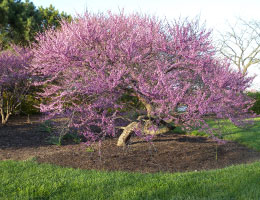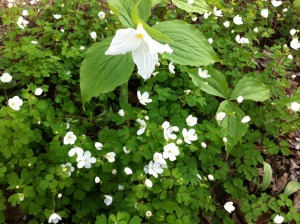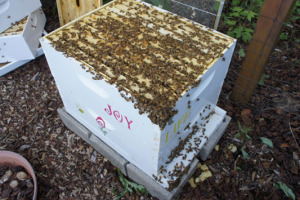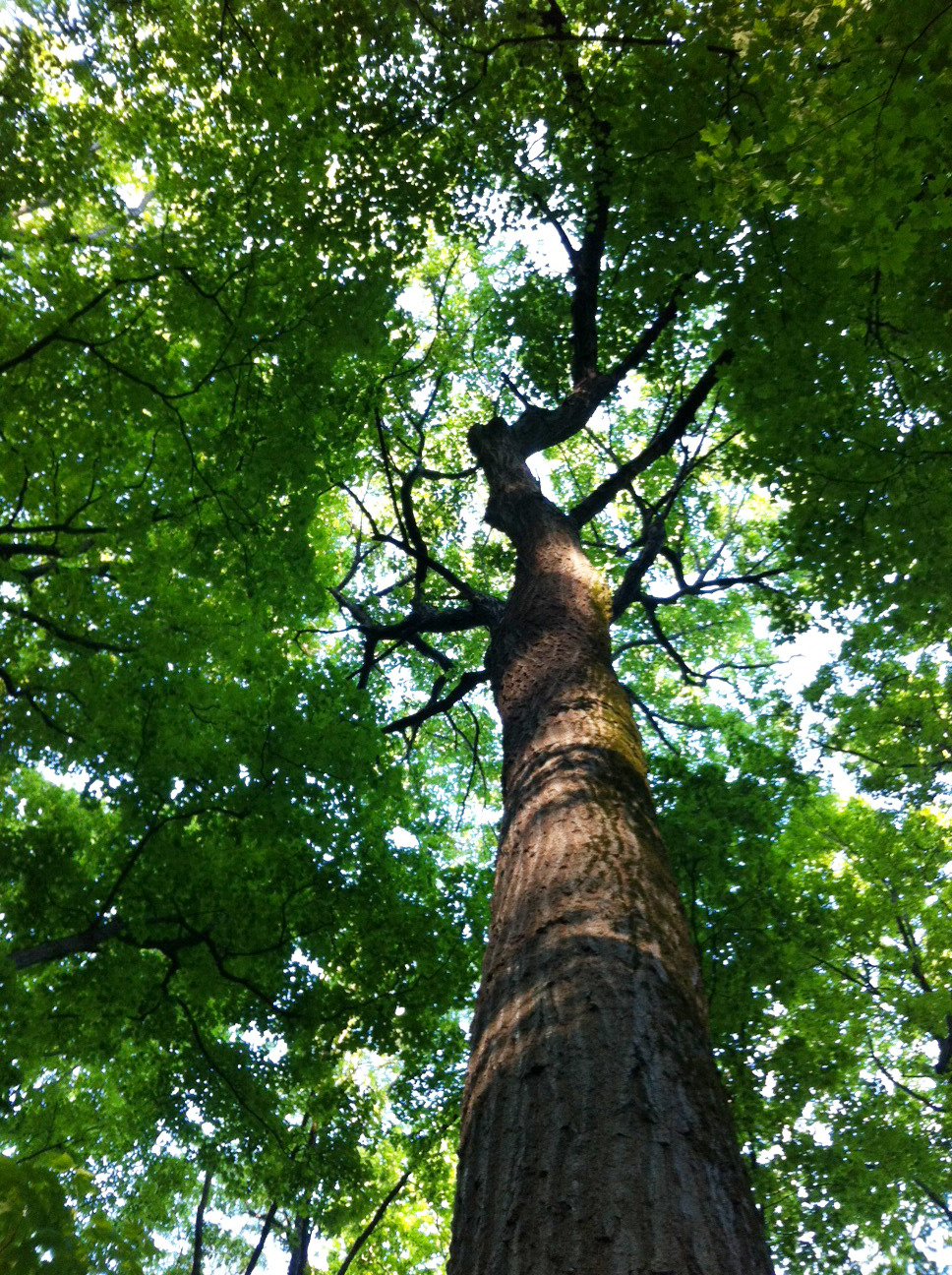May - Wisdom from the Trees
/Tree of the Month - Redbud
There are few trees that are more dramatic when in flower than the spring explosion of the Eastern Redbud (Cercis canadensis). Part of the unusual show is the eruption of flowers before any leaves emerge along the graceful stems of the tree in that spectacular fuchsia pink color. How could you not like how this looks after the long winters of the northern climates of North America? 
The Redbud is a difficult tree to get established and is best installed or transplanted only when it is in flower. Like any new transplant in the Chicago area mulching the existing and potential root zone of the tree, as shown here in it’s site at the Chicago Botanic Garden in Glencoe, will greatly enhance it’s chance for survival and thriving. The summer heart shaped leaves of this exquisite ornamental tree are a deep green with a slight dark violet hue. If any tree deserves the title of romantic, this one has my vote.
This tree is a relative of the Honey locust and both the flowers and indeed the buds are edible and good for putting in salads. It is sometimes called the Judas tree because of the Christian oral history surrounding it. Before Jesus was hanged by crucifixion, he was betrayed by His friend, Judas Iscariot, who, it is believed in anguished remorse of his action went out and hanged himself on a Redbud tree. The history also holds legend that the tree blushed in shame and was forever after pink.
A Desperate Race
Backyard Wisdom by Gilbert A Smith

THE COMPETITION FOR ENERGY IS FIERCE, forcing woodland flowers to live their whole above ground year in just four to six weeks. Even though there is competition, the trees and flowers have worked out a way to live in perfect synergy.
The fallen tree leaves warm the soil and protect the flower bulbs through the winter. In the late winter the soil microorganisms break the leaves down into essential plant nutrients. But it is too early for the trees to use the nutrients and the spring rains would wash them out of the soil if it weren’t for the wildflowers. They are in their most active growth period and they gobble the nutrients up, thereby holding them in the system. Then, just when the trees need the nutrients to support their great stately growth, the lowly woodland wildflowers go dormant and give the nutrients back.
What lessons do the trees and flowers have for us?
For our landscapes one lesson is to grow trees in native associations. That’s not really as hard as it sounds. It just means that you isolate your trees and shrubs from grass and thick ground covers as they do at the Morton Arboretum and Chicago Botanic Gardens. Create woodland gardens.
Next, don’t rake leaves out of those non-grass areas....EVER. Don’t use fossil fuels and other precious resources (your money) to rob the trees of their natural nutrients during spring and fall cleanup. If you really want to mimic the simple forest economy, have your landscaper grind the grass clippings and leaves into mulch and leave it on your grass or in your woodland gardens.
Third you can plant just a few wildflowers every fall, and if you don’t use pre-emergence herbicides your wildflower garden will spread every year. If you’d like to get a few ideas take a walk through the woodland wildflower gardens at the Chicago Botanic Gardens.
The trees are ever are teachers. We can live in intense competition for natural resources and at the same time in synergy, if we learn to give back and recycle. Photos by Gilbert A Smith
Sweet Surprises
Mother Nature’s Moment by Lesley Bruce Smith
 Did you know that over 99% of the bees in a hive are female and the girls do all the work! The hive is an amazingly complex system of cooperation and mutual care. Much to my surprise, I find myself going out to the hives and greeting the girls almost every day just to watch them busily go in and out of their home. I am always relaxed by watching them for a moment or two and usually learn something interesting in the bargain.
Did you know that over 99% of the bees in a hive are female and the girls do all the work! The hive is an amazingly complex system of cooperation and mutual care. Much to my surprise, I find myself going out to the hives and greeting the girls almost every day just to watch them busily go in and out of their home. I am always relaxed by watching them for a moment or two and usually learn something interesting in the bargain.
After our unexpected bounty of honey in the fall I created beautiful labels and gave honey away as gifts to many friends and family. So many people stated that it was the best honey they ever tasted that we were actually surprised. Then just recently I read an article which might explain why and greatly saddened me about the fact that the majority of honey sold in stores isn’t really honey at all.
It may have started in the hive but in the USA, the sale of certain types of foreign honey is prohibited, because it contains so many illegal antibiotics and heavy metals. The only way to trace the origin of honey is through the DNA of the pollen. Unfortunately, most commercially sold honey is ultra filtered to strip it of the pollen, and to filter it in this way, in a large commercial setting, requires heating and sometimes even watering down the honey. This ultra filtering and heating process destroys all the life giving enzymes in honey and sometimes it is even cut with high fructose corn syrup. Sadly, by the time it reaches our grocery store shelves, what we are purchasing is a poor substitute for the rich golden nectar that the honeybees so carefully create. It takes 2 million flower visits for honeybees to create a pound of honey! It is truly a precious commodity. Photo by Lesley Bruce Smith



